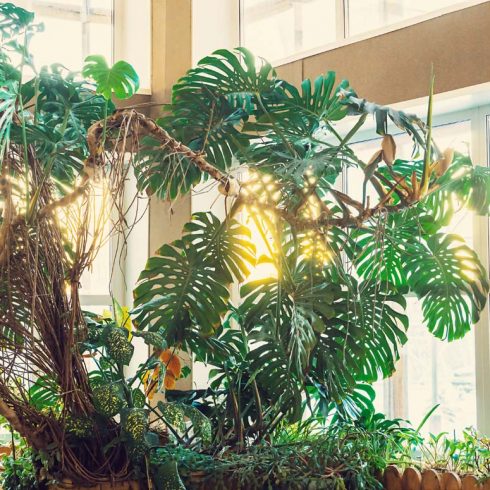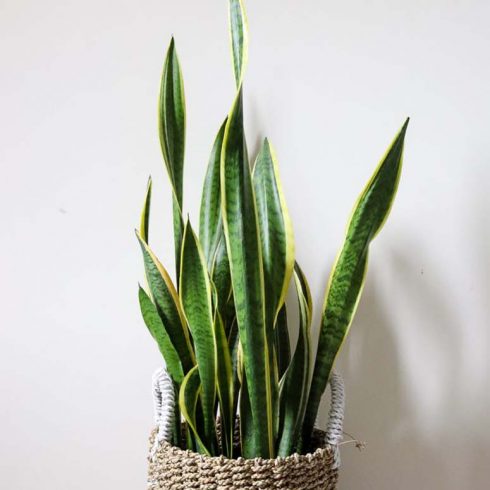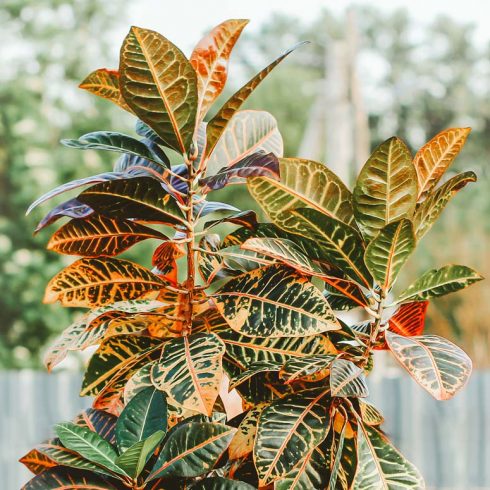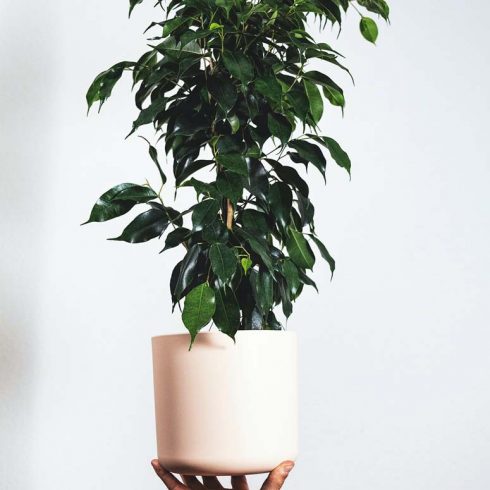Making your space feel like a luxury home is easier than you think. Tall potted plants with oversized foliage instantly elevate the look and feel of any room. If you adore houseplants and are looking to size up, these are the best tall indoor plants you can buy today.

Fiddle Leaf Fig
The fiddle leaf fig or ficus lyrata is ubiquitous in interior design. With its show-stoppingly glossy fiddle-shaped leaves, this tree can grow more than 3 meters tall indoors under the right conditions. Native to western Africa, the fiddle leaf fig is notoriously picky about its growing conditions. A warm spot with lots of light, well-draining soil and a pot with drainage are musts for this diva of the plant world.

Monstera Deliciosa
If you like big leaf indoor plants, check out the monstera deliciosa!It’s right there in the name: these beauties can get monstrously big in the wild. Their leaves can grow up to 2 meters wide! Although they’re native to southern Mexico and Panama, they are commonly known as the swiss cheese plant. Outdoors they can be found climbing up the trunks of other trees and plants with their aerial roots. If you want your monstera to grow lush and tall with big fenestrated leaves, try to simulate this environment by giving it a wooden plank to climb up.

Parlour Palm
The parlour palm gives instant lush, tropical vibes. Native to the rainforests of southern Mexico, this plant appreciates high humidity and light conditions (but can tolerate less). This makes it a great plant for a bright bathroom. Prune this plant from the bottom only and let the top couple inches of soil dry out between waterings. It appreciates a well-draining, high quality soil, and likely won’t need to be repotted often.

Corn Plant
With its thick stalk and bushy leaves, the corn plant is native to tropical regions of Africa where it can grow up to 15 metres tall! Dracaena fragrans does best in indirect or dappled light – if the sun’s rays touch the leaves, that’s too much light. When it comes to watering, leave your corn plant in its well-draining nursery pot and you can safely use the “drench and drought” watering method: water the plant thoroughly until water runs out the bottom, then let the first couple inches dry out before watering again.
Related: How to Rescue Your Dying Houseplants

Rubber Plant
The ficus elastica is the ficus lyrata’s chill little sister. That’s right – the rubber plant is nowhere near as finnicky or dramatic as the fiddle leaf fig, even though they belong to the same family (ficuses). Rubber plants are native to eastern southeast Asia and can grow to be more than 30 metres tall in the wild. Their leaves are thicker and more succulent than the fiddle leaf fig’s, which makes them much more forgiving if you forget to water now and then. They also will tolerate lower light conditions, but if you want them to grow tall, give them bright indirect sunlight.

Bird of Paradise
There are a number of different types of birds of paradise, but the white bird of paradise is the tallest of them all. It can grow to be up to 10 metres tall in the wild in its native South Africa. These do well in a well-draining soil and don’t like to dry out for too long. With their lush and tropical leaves, birds of paradise will do well with lots of light and ideally a higher humidity. One thing to keep in mind: if the leaves on your bird of paradise split or tear, don’t panic! This is totally normal for these delicate leaves and doesn’t harm the plant.

Snake Plant
The snake plant is somewhat renowned in the plant world for being virtually indestructible. Native to west Africa, it tolerates low light, low humidity and virtually any other form of neglect. Put it in a well-draining soil and a pot with drainage and you can water every month or two.

Petra Croton
There are many different types of croton, but the petra croton (codeium variegatum) is one of the most common. This plant originates in Malaysia and Southern India, and is well-loved for its stunning multicoloured foliage. Like so many tropical plants, it appreciates humidity and a bright sunny spot to keep putting out that colourful foliage. It’s also a good idea to give the leaves a good wipe down and inspection every so often to catch any pests before they can damage the plant.

Weeping Fig
Also known as weeping fig, the ficus benjamina is native to Asia and Australia. Give this fig a warm spot with bright indirect light to set it up for success. Like the fiddle leaf fig, it’s particular about its growing conditions. Overwatering, underwatering and cold drafts can cause it to drop leaves. Avoid this by keeping it in a spot with a steady temperature rather than lots of fluctuations and watering only when the top inch or so of soil is dry to the touch.

Pothos, Araceae
Although you can often find the golden pothos in hanging baskets with trailing vines, most pothos are climbing plants. In French Polynesia, where they originate, they use their aerial roots to cling and climb up larger tree trunks or other surfaces. You can simulate this in your home by giving them a wooden stake or moss pole to climb up. They can grow several feet tall this way – it just depends on the length of the stake you give them! This will help them put out larger and more mature leaves, giving it that tropical look you’re after.
HGTV your inbox.
By clicking "SIGN UP” you agree to receive emails from HGTV and accept Corus' Terms of Use and Corus' Privacy Policy.




